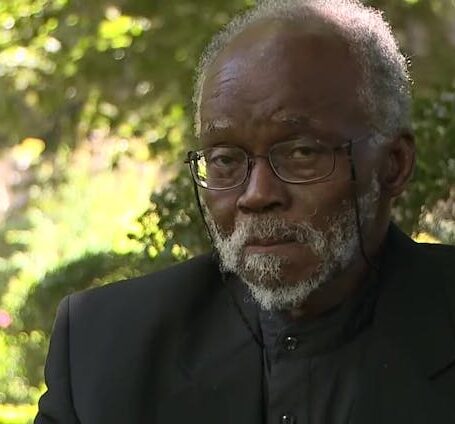Dumbing up
 The challenge of writing popular psychology came home to me recently when I accepted the invitation to write Forensic Psychology for Dummies. A couple of years earlier I had written ‘a very short introduction ‘ to Forensic Psychology for Oxford University Press, but that was rather different, being a fifth the size, and not meant as any sort of reference book. Yet it was an interesting warm-up for getting to grips with ‘for Dummies’.
The challenge of writing popular psychology came home to me recently when I accepted the invitation to write Forensic Psychology for Dummies. A couple of years earlier I had written ‘a very short introduction ‘ to Forensic Psychology for Oxford University Press, but that was rather different, being a fifth the size, and not meant as any sort of reference book. Yet it was an interesting warm-up for getting to grips with ‘for Dummies’.
Since I drifted into rape and murder and on to many other crimes, through trying to put some science into ‘offender profiling’, I’ve found that the popular understanding of what I am studying is an even bigger barrier to communication than the technical terms that psychologists use to clothe so much that is obvious. When writing or giving public lectures on such crowd pullers as serial killers or sex offenders, I have to start by dispelling myths in order to clear the way to talk about the psychology of criminals’ actions and the processes that can become part of police investigations.
The problem the public at large has is due to the widely influential Conan Doyle effect. The Conan Doyle formula for a popular detective story has remained virtually unchanged for over a century. The central protagonist, be he or she inside or outside the police, must be rather odd in any of a number of ways; preferably having difficulty in relating to others, or some sort of addiction that causes them to fight with their inner demons, but be gifted with a profound insight that their superiors dismiss, but which nonetheless gives the author/scriptwriter plenty of scope for moving the plot on whenever it gets stuck. The hero’s gifts may be knowledge of esoteric science and, human habits as with Sherlock Holmes, an ability to unravel puzzles as with Agatha Christie’s creations, and many other fictional detectives. More recently the special insights are apparently derived some sort of cod psychology, given authority by the claim that the character is a ‘Forensic Psychologist’, or ‘profiler’, even though most of what is done by the hero is so unprofessional, or downright illegal that it would have them banned from any further contact with the police and probably driven out of the profession. Furthermore, to the disappointment of the many youngsters who email me asking how they can have a career as a ‘profiler’, there is no such career opportunity. Forensic psychologists do many other, to my mind much more interesting, things than helping the police when they get into a mess with their investigations.
What I had not bargained on, though, was the jolly straightjacket that is the for Dummies format. Through their hundreds of titles and millions of sales they have evolved a winning house style that came as shock to me when the first draft chapter was returned. Only about twenty percent of my original words survived. My initial black text was hard to discern amidst the red corrections, blue comments, brown revisions and yellow highlighting. Of course I knew from the start that the witty tone and frivolous asides that characterises the for Dummies series was not going to be so easy to keep up when discussing disturbing and violent crimes and the people who perpetrate thembut what I was not ready for was that the development editor had an idea of what the book would be about that was not drawn from my original very detailed outline, but from the same fictional sources that untutored readers have access to.
So began the battle for a voice. I had experienced something like this once before when, ironically, the copy editor tried to rewrite my chapter on the author’s experience of copy editing in my book for academics on how to get published. So I knew battles could be won, if not the war. Time and again the development editor changed my account of what forensic psychology explores into a totally fictional account of what a forensic psychologist does in an investigation. For example, there is now a great deal of research into how to detect deception. Most of it occurs in laboratories or using one- off case illustrations, such as some US president denying something he was later found to have done. It does not consist of psychologists sitting next to police officers and nudging them whenever they think a suspect is lying as the people at For Dummies rather hoped.
In other respects, I was delighted to discover that topics I had thought were straightforward and obvious, were assigned a ‘strange but true’ icon. I learned that many apparently complex psychological issues can be rendered readily accessible once they are turned into a bullet point list. The format allowed me to range over most of what forensic psychologists do in prisons, the courts and hospitals with mentally disturbed patients convicted of crimes, and put the mythical ‘offender profiling’ into a realistic context. I was even able to draw attention to some of my bêtes noires with a ‘myth buster’ icon. Unexpectedly, the Development Editor and I found a few jokes, once I got the editor to stop trying to get cheap laughs by caricaturing offenders as being not quite human. But I had to bite the bullet when the Brand Review would not allow me to comment on the dodgy business of psychologists helping with torture at Guantanamo.
When the page proofs turned up I read through them with surprise at how well written the book was, but hearing the For Dummies voice not my own, and reading about all sorts of things that I don’t remember knowing. The cartoons that are de rigueur for this series, sadly draw on a popular psychology from the 1930s, but that is not a battle worth fighting. One did make me laugh out loud.
































































































